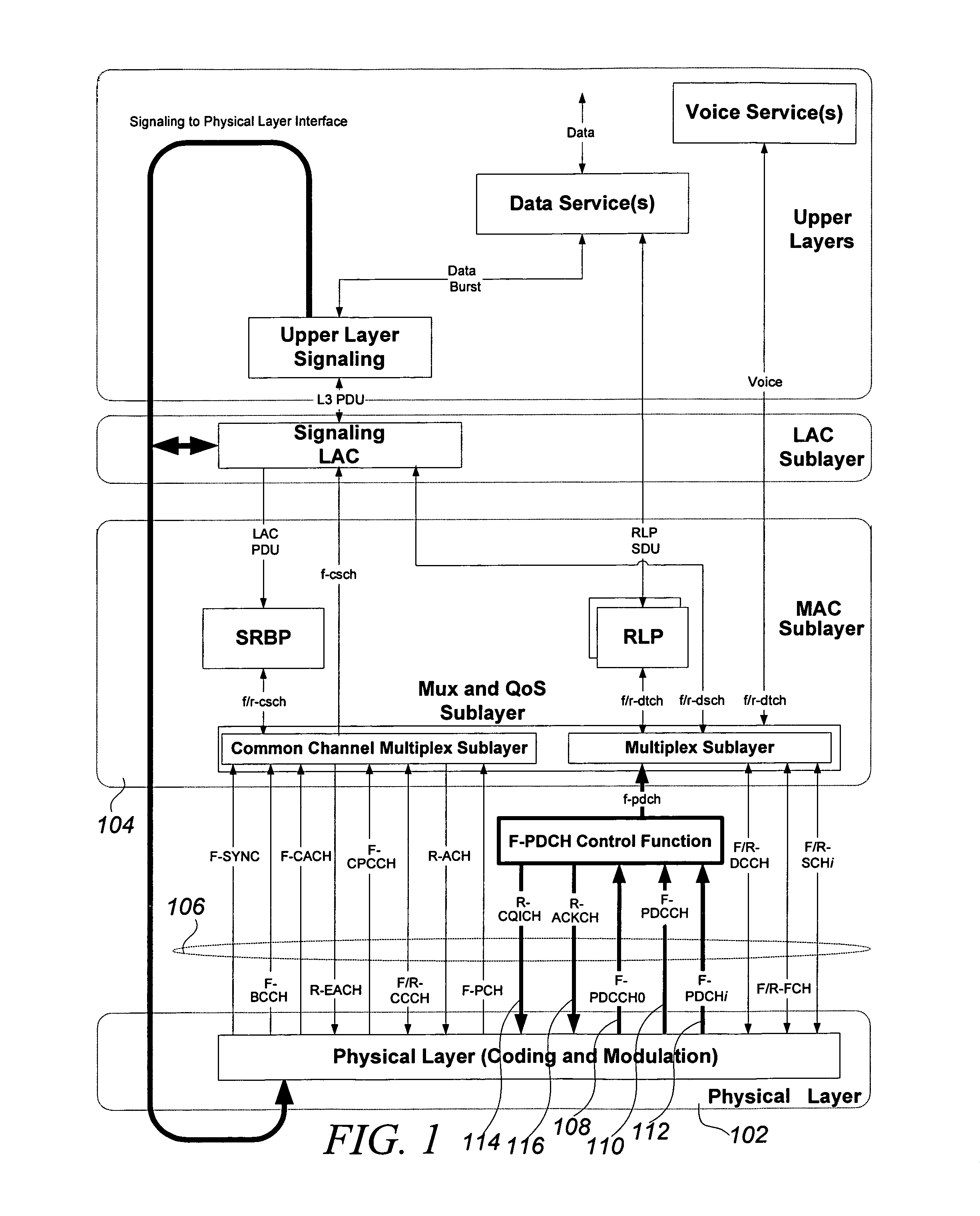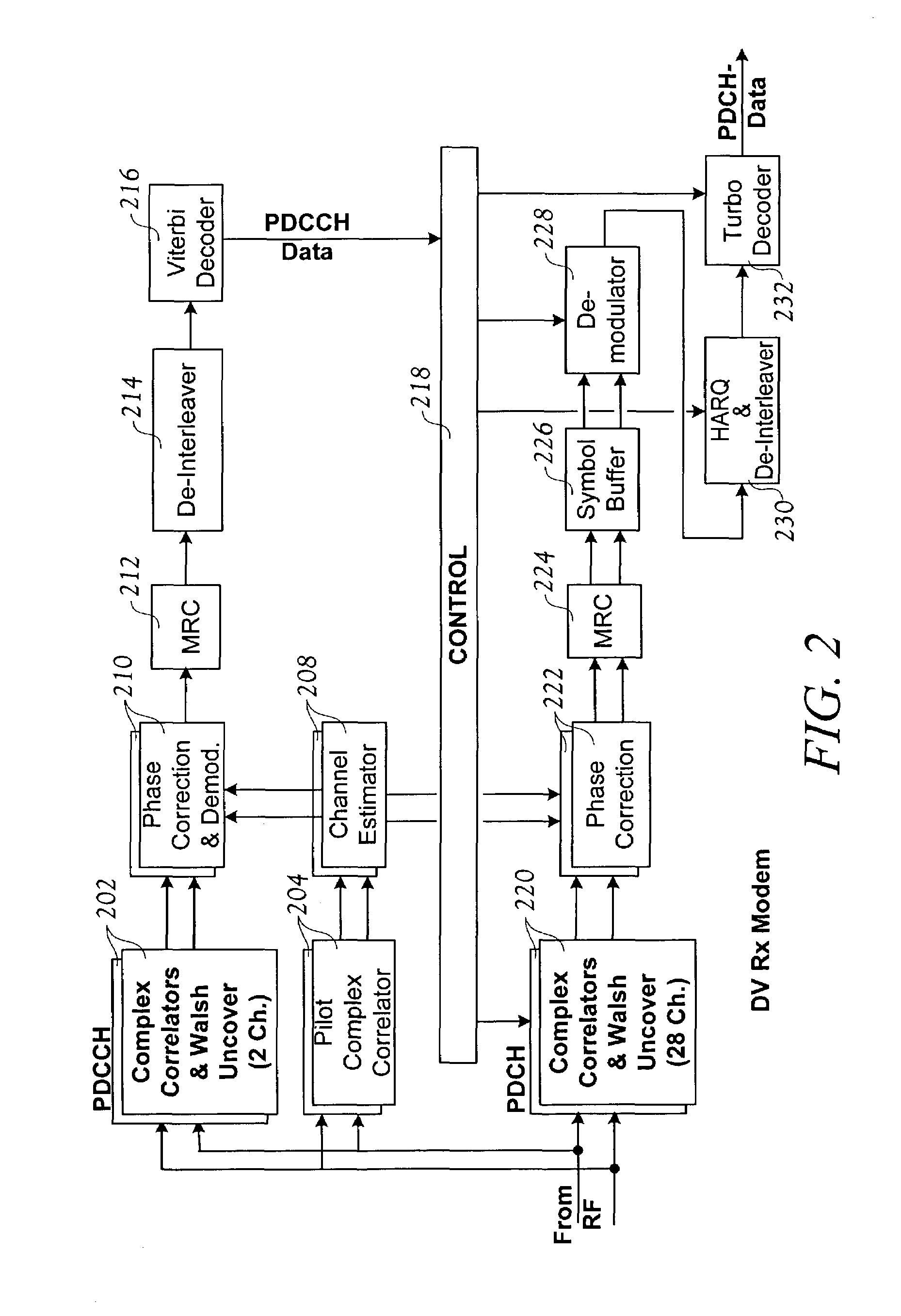Method and apparatus for reducing power of a CDMA mobile station by controlled transition from control hold to active state
a mobile station and control hold technology, applied in the field of wireless communication, can solve the problems of increasing power consumption, complex devices with large receive signal processing capability, and ev-dv-enabled mss, and achieve the effect of reducing power dissipation
- Summary
- Abstract
- Description
- Claims
- Application Information
AI Technical Summary
Benefits of technology
Problems solved by technology
Method used
Image
Examples
Embodiment Construction
Overview
[0023]CDMA cellular telephone communications systems have been primarily implemented for voice communications. There has been a desire to add reasonably high-speed data communication capability to such systems. In order to achieve effective data transmission together with voice transmission (referred to herein as “EV-DV”), a number of CDMA system features are being added or modified. For example, in order to increase overall data rate, several additional physical channels are provided in EV-DV-capable CDMA mobile station (“MS”) transceivers to support packet data communication. Additionally, in order to enhance flexibility for delivering data to a multiplicity of users, the basic 20 ms frame structure of previous versions of CDMA protocol is made controllable and addressable in “slots” having a duration of 1.25 ms.
[0024]The physical channels added to support packet data capabilities include both forward and reverse channels. FIG. 1 illustrates an exemplary interface between ...
PUM
 Login to View More
Login to View More Abstract
Description
Claims
Application Information
 Login to View More
Login to View More - R&D
- Intellectual Property
- Life Sciences
- Materials
- Tech Scout
- Unparalleled Data Quality
- Higher Quality Content
- 60% Fewer Hallucinations
Browse by: Latest US Patents, China's latest patents, Technical Efficacy Thesaurus, Application Domain, Technology Topic, Popular Technical Reports.
© 2025 PatSnap. All rights reserved.Legal|Privacy policy|Modern Slavery Act Transparency Statement|Sitemap|About US| Contact US: help@patsnap.com



